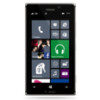Nokia Lumia 925 User Guide - Page 124
Operating environment, Information on health, Vehicles, Safety and texting while driving - metal
 |
View all Nokia Lumia 925 manuals
Add to My Manuals
Save this manual to your list of manuals |
Page 124 highlights
Operating environment This device meets radio frequency exposure guidelines in the normal use position at the ear or at least 5/8 inch (1.5 centimeters) away from the body. Any carry case, belt clip, or holder for body-worn operation should not contain metal and should position the device the above-stated distance from your body. The sending of data files or messages requires a quality network connection and may be delayed until such a connection is available. Follow the separation distance instructions until the sending is completed. Parts of the device are magnetic. Metallic materials may be attracted to the device. Do not place credit cards or other magnetic storage media near the device, because information stored on them may be erased. Information on health The U.S. Food and Drug Administration (FDA) and the U.S. Federal Communications Commission (FCC) published statements and questions and answers concerning mobile telephones and health. Nokia encourages you to visit these websites for updated information. You can access the FDA website at www.fda.gov/Radiation-EmittingProducts/ RadiationEmittingProductsandProcedures/HomeBusinessandEntertainment/CellPhones/default.htm and the FCC website at transition.fcc.gov/oet/rfsafety/rf-faqs.html. Additional health-related information is available from the World Health Organization (WHO) at www.who.int/mediacentre/factsheets/fs193/en/ and The National Cancer Institute ("NCI") www.cancer.gov/ncicancerbulletin/NCI_Cancer_Bulletin_092308/page7. In the event that you are concerned about possible health effects, the FDA suggests that you limit your own or your children's radio frequency (RF) exposure by limiting the length of calls or by using handsfree devices. Vehicles Radio signals may affect improperly installed or inadequately shielded electronic systems in vehicles. For more info, check with the manufacturer of your vehicle or its equipment. Only qualified personnel should install the device in a vehicle. Faulty installation may be dangerous and invalidate your warranty. Check regularly that all wireless device equipment in your vehicle is mounted and operating properly. Do not store or carry flammable or explosive materials in the same compartment as the device, its parts, or accessories. Do not place your device or accessories in the air bag deployment area. Safety and texting while driving Safety should be every driver's first priority. Drivers must obey all local laws that may include restrictions on the use of mobile telephones or accessories while driving. If use is legal, always keep your hands free to operate the vehicle while driving and use a handsfree device whenever possible. Suspend calls in heavy traffic or hazardous weather. Get to know your mobile phone and its features and make any necessary information inputs prior to driving. Do not input data or engage in text messaging while driving. Mobile telephones should not be used when use may be a distraction to the driver. The Cellular Telecommunications & Internet Association (CTIA) has published further info and tips on safe use of cellular telephones at www.ctia.org/consumer_info/safety, which we encourage you to review. Potentially explosive environments Switch your device off in potentially explosive environments, such as near gas station pumps. Sparks may cause an explosion or fire resulting in injury or death. Note restrictions in areas with fuel; chemical plants; or where blasting operations are in progress. Areas with a potentially explosive environment may not be clearly marked. These usually are areas where you are advised to switch your engine off, below deck on boats, chemical transfer or storage facilities, and where the air contains chemicals or particles. Check with the manufacturers of vehicles using liquefied petroleum gas (such as propane or butane) if this device can be safely used in their vicinity. Certification information (SAR) This mobile device meets guidelines for exposure to radio waves. Your mobile device is a radio transmitter and receiver. It is designed not to exceed the limits for exposure to radio waves recommended by international guidelines. These guidelines were developed by the independent scientific organization ICNIRP and include safety margins designed to assure the protection of all persons, regardless of age and health. The exposure guidelines for mobile devices employ a unit of measurement known as the Specific Absorption Rate or SAR. The SAR limit stated in the ICNIRP guidelines is 2.0 watts/kilogram (W/kg) averaged over 10 grams of tissue. Tests for SAR are © 2013 Nokia. All rights reserved. 124












